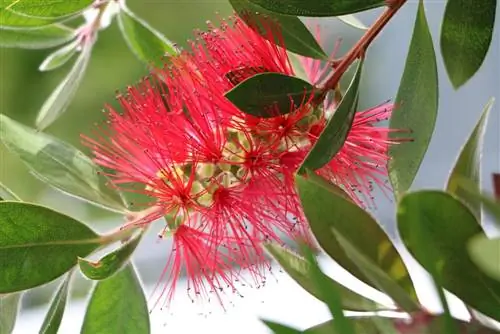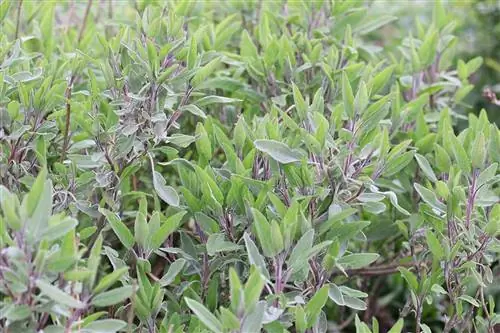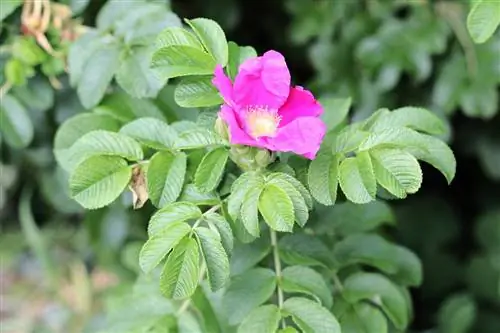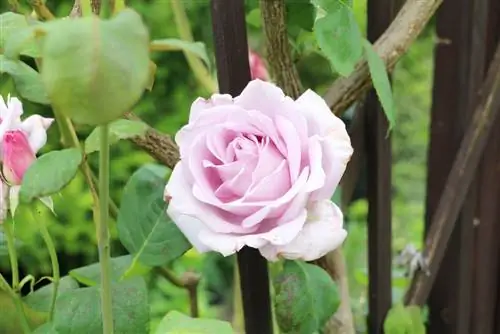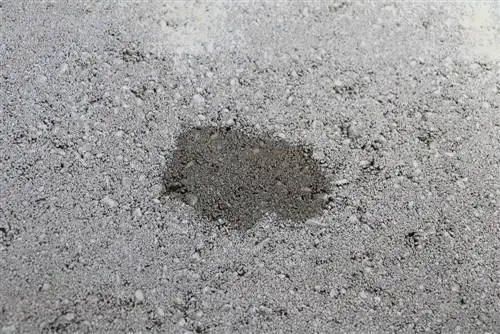- Author admin [email protected].
- Public 2023-12-17 03:39.
- Last modified 2025-06-01 06:48.
Because of its unusual shape, the cylinder cleaner (Callistemon citrinus, syn. Callistemon lanceolatus) is also called pipe cleaner, beautiful thread, lamp cleaner bush or bottle brush bush. The genus consists of several very frost-sensitive to hardy evergreen shrubs and trees.
Flowers and leaves
The cylinder cleaner is interesting because of the flower alone. Depending on the species, it flowers up to three times a year; April/May, August and December. The 10 to 15cm long flowers, which have very delicate stamens, last for a long time and usually shine in red, but also in pink and yellow. The flowers themselves are rather inconspicuous greenish, only the long stamens, which often completely cover the flowers, are strikingly colorful.
The leaves are firm and have a delicate scent of lemon (which also gave the plant the botanical name citrinus). If you rub it between your fingers, the smell becomes much more intense. Callistemons are evergreen. The frost-sensitive species in particular impress with their extraordinary flowers, so that almost only these are offered in stores here.
Care
Cylinder cleaners need a lot of water, the soil should always be kept slightly moist. They can tolerate short dry periods of 1-2 days, but they usually need months to recover afterwards. They are just as sensitive to waterlogging as they are to dryness. It is best to use rainwater for watering, as the plant does not tolerate lime well. As a heavy feeder, it needs a lot of nutrients, so it loves weekly to fortnightly fertilizer applications. Although it survives without any nutrient supply, this comes at the expense of its ability to flower.
Planting substrate
The lamp cleaner absolutely needs lime-free soil. Potted plant or rhododendron soil is suitable. But sand is mixed in with both. The substrate can be acidic or neutral. A drainage layer at the bottom of the pot is ideal. The planter should not be too large. As soon as it becomes too rooted, it needs to be repotted. The best time for this is spring. It's best to plant back in the old pot, but cut back the root ball by about 2 to 3 cm all around. This way the plant doesn't get too big. If you have space, you can just let it grow and use a larger pot.
Watering and fertilizing
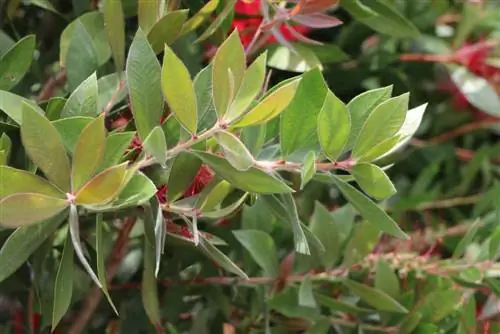
It is important to know that the cylinder cleaner does not tolerate hard water. Rainwater is ideal for watering. Limescale in the water causes the leaves to yellow over time and the plant to become sick. It needs to be watered regularly. The plant ball must not dry out. However, there should be no water in the coaster. Wet feet cause the roots to begin to rot. Planted cylinder cleaners can also tolerate drought. Fertilizing is important for the plants, which need a lot of energy for their numerous flowers. Normal flowering plant fertilizer is suitable. However, special fertilizer for potted plants is better. It is enough to fertilize every 2 to 4 weeks.
Location
Callistemons are sun-hungry, so they need a full sun, bright location. Temperatures between 18 and 20 degrees Celsius are ideal. They are heavy feeders, so they need soil that is rich in nutrients and humus. It should be permeable, as it does not tolerate waterlogging well, but they like a constantly moist soil in summer. The plant thrives best in normal to acidic soil. A mixture of rhododendron and normal garden soil is ideal here.
To improve the permeability of the soil, add pieces of bark or polystyrene balls to the mix. Some proud owners of this beautiful Australian plant keep it purely as a houseplant, which is entirely possible. However, she prefers a summer outside on the terrace or in the garden and thanks for this with a particularly strong flower bloom.
Wintering
Most of the species offered here are not hardy and are better off overwintering in a light, frost-free environment. Temperatures between 2-8 degrees Celsius are ideal here. They also only tolerate frost to a very limited extent, so it is safer to bring them into the house before the first frosts. The exotic plants are only allowed outside after the Ice Saints in May. After hibernation, they need a certain period of getting used to and should not be placed in the blazing sun immediately. It is better to let them acclimatize in a partially shaded location for about 14 days.
In the winter quarters there is little watering and no more fertilization. From March onwards, give a little more water and from this time onwards you can fertilize again. Fertilizer should be applied by August. A later supply of nutrients continues to stimulate growth, but the new shoots can no longer become strong enough to survive the winter. Since cylinder cleaners are somewhat sensitive to limescale, it is recommended to create a small supply of rainwater for watering in the winter.
Cutting

Callinder cleaner tolerates pruning well. Since the plant flowers on the previous year's wood, it is cut back immediately after flowering. Above all, remove the faded shoot ends, as no leaves or flowers will grow on them anymore. Pruning is also needed to encourage better branching and achieve more compact growth. A radical pruning is possible, but should only be carried out on really outdated cylinder cleaners, because the new growth costs the plant a lot of energy.
Pests
The cylinder cleaner is rarely attacked by whiteflies, but aphids are more common here.
Whiteflies
They multiply extremely quickly and it is hardly possible to control them outdoors. Sprays offered don't do much good because the animals have to be sprayed directly to be successful and they usually sit on the undersides of the leaves and fly away quickly. Marigolds (Tagetes) and basil are avoided by pests, so it is best to plant these plants close to the callistemon.
Aphids
The easiest way to get rid of the unwanted guests is to spray them with a sharp jet of water. Lavender and thyme are not popular with aphids and are avoided, which is why it makes sense to place your callistemon next to such plants.
Known species
- Stiff cylinder cleaner (Callistemon rigidus) - height 1 to 2, 5m and 2 to 3m wide. In summer it produces dark red flower spikes on dull green leaves. The bushy and quite densely growing shrub is only conditionally hardy and can be wintered rust-free.
- Lemon Callistemon (Callistemon pallidus) - height 2 to 4m and just as wide. Cream-colored, green-tinged flowers are produced from late spring to mid-summer. The grey-green leaves form a nice contrast. This species grows like a bush and is only conditionally hardy and can be frost-free over the winter.

